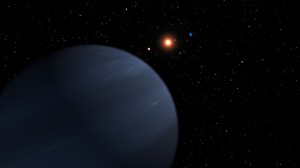
Planets Orbiting 55 Cancri - Image credit: NASA/JPL-Caltech
The Kepler telescope was designed to search for Earth-like planets in other solar systems. Kepler’s findings total more than 700 possible exoplanets, but NASA will not make public information about the remaining 400 objects until February of next year. The Kepler team will be researching those objects through the summer in hopes that at least one turns out to be an alien Earth.
Approximately 156,000 stars were surveyed for evidence of orbiting planetary bodies in the constellations of Lyra and Cygnus.
